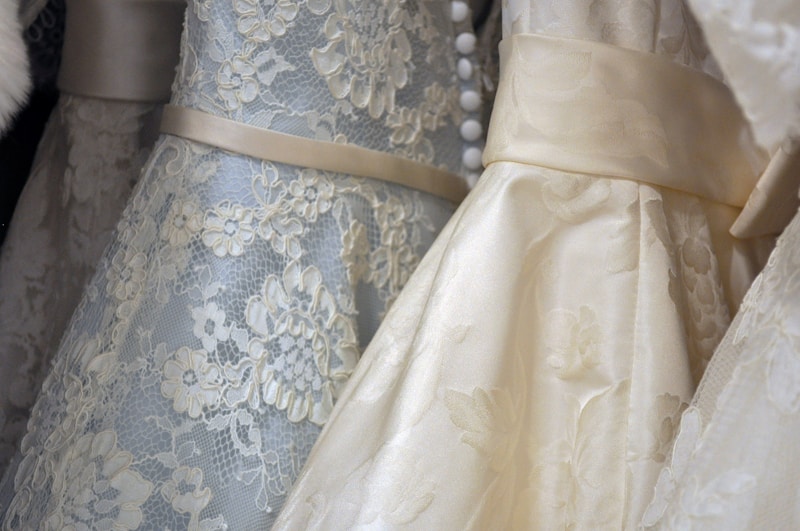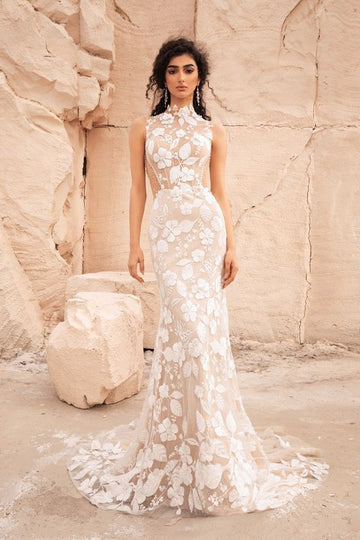Bridal Attire as a Canvas for Cultural Storytelling
Bridal Attire as a Canvas for Cultural Storytelling
Understanding the Significance of Bridal Attire
Bridal attire has long transcended mere fashion. It serves as a profound canvas for cultural storytelling, reflecting the rich heritage and traditions of various communities around the world. The garments worn by brides are often steeped in symbolism, representing not only personal identity but also the collective history of their cultures. In this article, we will explore the intricate relationship between bridal attire and cultural narratives, examining different global traditions and styles.
The Cultural Significance of Bridal Attire
Bridal attire varies significantly across cultures, each design carrying unique meanings and telling specific stories. Let's take a closer look at some of the renowned bridal garments around the world:
| Region | Bridal Attire | Cultural Significance |
| India | Saree or Lehenga | Symbolizes beauty and femininity, often embellished with traditional embroidery. |
| China | Qipao (Cheongsam) | Represents elegance and tradition, typically red to symbolize good luck. |
| Western Countries | Wedding Gown | Often a symbol of purity and innocence, with variations reflecting personal styles. |
| Africa | Kanga or Boubou | Expresses cultural pride, often featuring vibrant colors and patterns unique to the bride's ethnic group. |
| Japan | Kimono | Embodies grace and heritage, often adorned with seasonal motifs. |
Bridal Attire as a Storytelling Medium
The choice of bridal attire often serves as a communication tool for brides to convey their cultural narratives. For example, the vibrant colors and patterns in traditional African attire may reflect the bride’s lineage or the community she belongs to. Similarly, in Indian weddings, intricate designs and layers in the lehenga can narrate the history of the family and the significance of the celebration.
Cultural Influences on Bridal Attire
Bridal attire is influenced by various factors, including religion, geography, and social status. For instance, in India, the saree is not just a garment; it is a representation of hundreds of years of tradition. Each region boasts a distinct style—such as the Banarasi saree from Varanasi, known for its intricate gold brocade, or the Kanjivaram saree from Tamil Nadu, celebrated for its vibrant colors and silk quality.

Modern Interpretations of Traditional Attire
As societies evolve, so do the interpretations of traditional bridal attire. Many contemporary brides are now blending modern styles with traditional elements. For example, Western brides may incorporate cultural fabrics or hand-embellished details inspired by their heritage. This fusion often results in stunning wedding visuals that tell a broader story of identity and evolution.
The Role of Personal Identity in Bridal Attire
Brides today are more inclined to personalize their wedding attire beyond cultural norms. This personal touch can be seen in the choice of colors, styles, and fabrics that resonate with the bride's individuality. By customizing their attire, brides are able to express their unique stories on one of the most important days of their lives.
Common Questions About Bridal Attire as a Canvas for Cultural Storytelling
As interest in bridal fashion continues to grow, many brides and enthusiasts have specific questions regarding cultural attire. Below are some commonly asked questions:
- What is the meaning behind the color white in Western bridal attire?
- How can brides incorporate their cultural heritage into modern wedding attire?
- What are the best fabrics for traditional bridal wear?
- Why are certain styles preferred in different regions?
- How can one honor both traditional and contemporary styles in bridal attire?
Embracing Diversity in Bridal Fashion
The global trend of embracing diverse bridal fashion is notable. This inclusivity not only fosters greater understanding among cultures but also showcases the beauty inherent in these differences. Celebrating cultural stories through bridal attire helps brides connect with their roots while expressing their identities in a modern landscape.
Conclusion: Weaving Cultural Narratives into Bridal Attire
Bridal attire serves as an essential medium for cultural storytelling, reflecting both the history and the evolution of traditions. As brides continue to explore their identities, the significance of attire grows richer, showcasing unique narratives that deserve to be told. Whether opting for traditional styles or modern adaptations, each bridal garment ultimately tells a story—of culture, of love, and of personal journey.
When choosing bridal attire, consider the cultural narratives you wish to embrace. Research the history behind your selections, and don't hesitate to tailor your outfit to reflect your personal story. Remember, your wedding day is an opportunity to celebrate not just love but the rich tapestry of identities that shape who we are.
